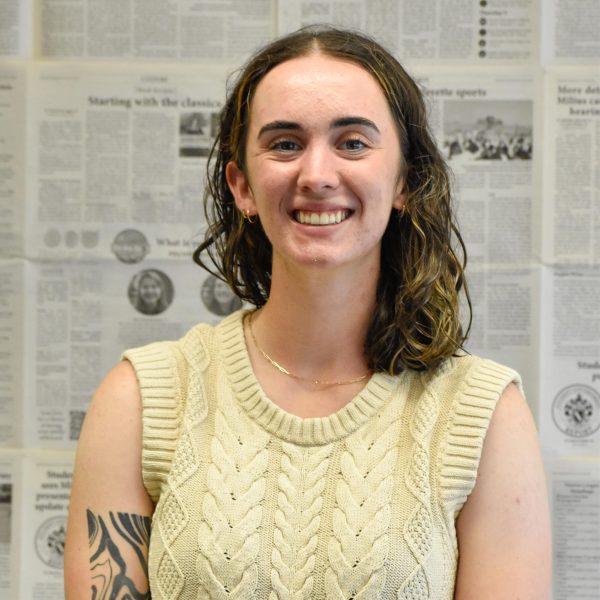On the heels of Caitlin Clark becoming the all-time leading scorer in NCAA basketball history this week, I would like to take the time to reflect on the value of women’s performances in both collegiate and professional athletics and what it would take to achieve true parity.
I have been an athlete for as long as I can remember. Golf, soccer, softball, basketball, dance — I have done it all. In all of those years, countless people — mostly men — have told me that women’s sports are simply less interesting and less competitive than men’s sports.
I disagree.
Last October, Lexi Thompson played on the PGA Tour in the Shriners Children’s Open. Although she missed the cut, her impressive play from 7,255 yards — nearly 700 yards longer than comparable Ladies’ PGA (LPGA) Tour yardages — demonstrated her ability to compete with the men.
Similarly, the long-awaited three-point shoot-out between Steph Curry and Sabrina Ionescu during NBA All-Star Weekend on Feb. 17 showed that Ionescu could keep pace with arguably the best three-point shooter of all time. While Ionescu lost by three points, her total of 26 matched the men’s high in the three-point contest held earlier that night.
However, the notion that female athletes have to prove their capabilities by competing against men implies that female athletes can only be “great” if they can measure up to men. There is no question that there is a difference between men’s and women’s sports, but the type of deficit-based thinking that people use to detract from female athletes’ accomplishments stems from the fact that women’s sports are judged on a paradigm of male performance.
When “bigger, stronger, faster,” is exalted as the be-all, end-all of athletic performance, female athletes are seen as less capable when they are not as big, strong or fast as male athletes.
However, there should be room for valuing accuracy and technical skill in athletics. For instance, 54 players hit 70 percent or more of greens in regulation on the LPGA Tour last year. Only 19 PGA Tour players can say the same.
We need to set a new paradigm for performance in athletics that values the skill sets of all athletes, including transgender and nonbinary athletes.
That said, last year was a huge step in the right direction for women’s sports.
Over the summer, Australia and New Zealand co-hosted the FIFA Women’s World Cup. The tournament was attended by almost 2 million people and generated an estimated $1.32 billion Australian dollars ($865.7 million USD) for the host country.
The University of Nebraska women’s volleyball team set the attendance record for women’s sports in August, with 92,003 fans in attendance for the Huskers’ victory over the University of Nebraska Omaha.
The 2023 NCAA women’s basketball national championship game set a new viewership record, peaking at 12.6 million viewers with 9.9 million viewers on average.
The National Women’s Soccer League inked a four-year, $60 million-a-year TV deal with CBS, ESPN, Prime Video and Scripps, marking a record-breaking investment in women’s sports.
Women’s sports are not less engaging than men’s sports. They are just undervalued.
TV contracts have historically short-changed women’s sports by not giving them prime-time slots on network TV. This means that potential audiences around the world are not able to watch women compete, while lower ratings are used to justify the undervaluation by media organizations.
All of this leads to lower purses and contracts for female athletes. The argument that female athletes should get paid less than male athletes because “no one wants to watch women’s sports” looks very different when put into this context.
Watching women’s sports is investing in parity for women’s sports. So, invest.




















































































































